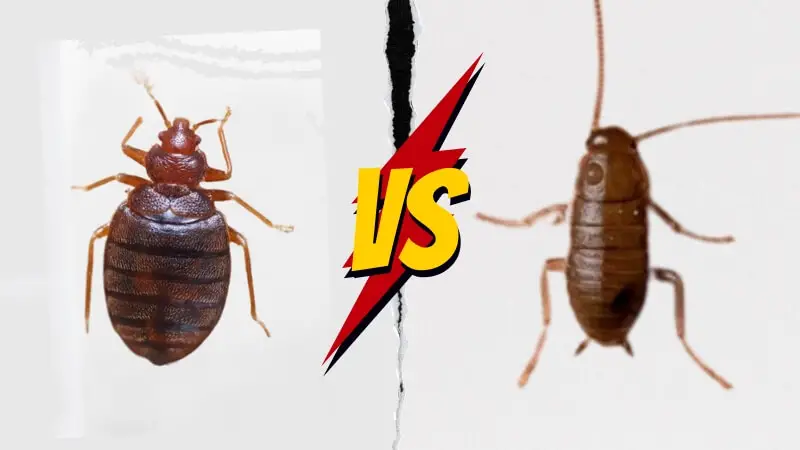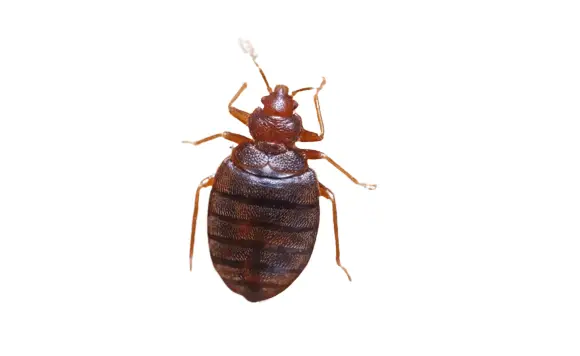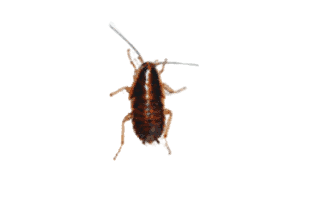Baby Roach vs Bed Bug

Bed bugs are a common pest that most people have heard of, but not everyone knows how to identify them. On the other hand, baby roaches are often mistaken for bed bugs and can be just as much of a problem. This article will teach you what to look for to avoid getting either one!
Baby Roach Or Bed Bug
This table chart will provide a clear understanding of the differences at a quick glance.
| Feature | Bed Bug | Baby Roach |
|---|---|---|
| Size | Up to ¼ inch | ¼ inch to ½ inch |
| Bite Preference | Actively bites humans | Rarely bites humans |
| Shape | Round, oval | Cylindrical |
| Antennae | Short | Long |
| Coloration | Reddish-brown | White (after molting) |
| Eyes | Protruding on sides | Black marks on face |
| Wings | Wingless | Develops wings |
| Hiding Spots | Beds, clothing, couches | Moist, warm areas |
| Host Preference | Human blood | No specific host |
| Disease Potential | Not known to transmit diseases | Can carry bacteria |
| Habitat | Soft, plush environments | Damp, dark spaces |
| Feeding Behavior | Blood | Omnivorous |
| Movement | Crawling | Crawling, flying, jumping |
| Speed | Agile | Very fast |
Pests in our homes can be distressing, especially when we’re unsure about what we’re dealing with. We present a detailed comparison to clarify the differences between baby cockroaches and bed bugs. Let’s dive in:
Size:
Baby cockroaches may initially seem incredibly small, but their growth potential is significant. Imagine them growing almost four times their initial size! Conversely, bed bugs don’t have such dramatic growth spurts, maintaining a relatively uniform size from adolescence to adulthood.
Bite Preference:
While a bite from a baby cockroach is rare, you’d be incredibly unlucky to experience one. On the flip side, bed bugs are notorious for their bites, which can often cause itchy, red welts. These welts are an unfortunate sign of their nightly feasts.

Shape:
If you’re ever unsure about the critter you’re looking at, their shape can be a significant indicator. Think cylindrical for baby cockroaches and more rounded, almost apple-seed-like for bed bugs.
Antennae:
Antennae can be a handy tool in identification. A baby cockroach’s antennae can be likened to a ruler, almost as long as its body. A bed bug’s antennae might remind you of a half-length pencil.
Coloration:
A baby cockroach’s color transition from white to reddish-brown is akin to its journey from infancy to adulthood. Bed bugs, on the other hand, prefer to remain incognito with their consistent reddish-brown camouflage.
Eyes:
Eyes can be the window to the soul, and for pests, a window to the identification. Baby cockroach eyes resemble thin, elongated marks, while bed bugs’ eyes stand out like two beads.

Wings:
The presence or absence of wings can be a dead giveaway. As baby cockroaches mature, they sport wings like badges of honor. Bed bugs, however, never experience the joy of wings, forever grounded.
Hiding Spots:
Think of baby cockroaches loving a steamy spa environment, often in humid, warm places. Bed bugs, in stark contrast, prefer the cozy confines of our sleeping and lounging areas.
Host Preference:
Baby cockroaches are like freelancers with no fixed commitment, constantly searching for food. Bed bugs, however, are specialists, with humans being their primary and favored clients.
Disease Potential:
Though both pests may cause distress, baby cockroaches bring with them a host of unwanted bacteria. Bed bugs, however annoying, primarily cause discomfort without the added risk of disease transmission.
Habitat:
Imagine bed bugs as luxury lovers seeking the plush comfort of soft environments. Baby cockroaches, however, are more about mood, preferring the ambiance of shadowy, moist areas.
Feeding Behavior:
A baby cockroach’s palate is diverse, from cereals to fruits, emphasizing its adaptability. Bed bugs are dietary specialists choosing a consistent blood-only diet.
Movement:
In the mobility department, post-nymph baby cockroaches might remind you of versatile athletes with flying and jumping skills. Bed bugs, however skilled, are limited to the ground game.
Speed:
In a speed contest, baby cockroaches might take the crown with their nimble sprinting prowess. Bed bugs might not be Olympic sprinters but they can impressively traverse a football field’s length in an hour.
In conclusion, while baby cockroaches and bed bugs might sometimes look similar, understanding these differences can aid in identification and subsequent management or eradication.

James E. Butkovich, Pest control maven with a knack for eco-friendly & Chemical solutions. Blogger with a mission to make homes pest-free, one post at a time.